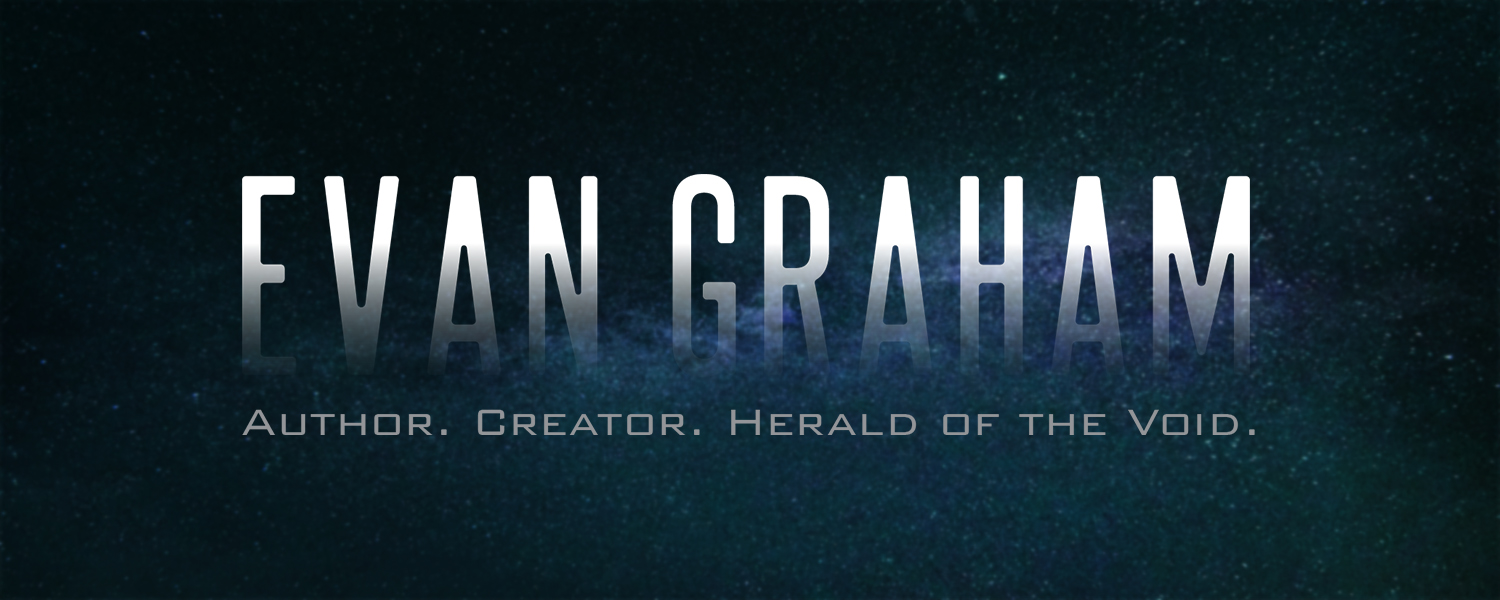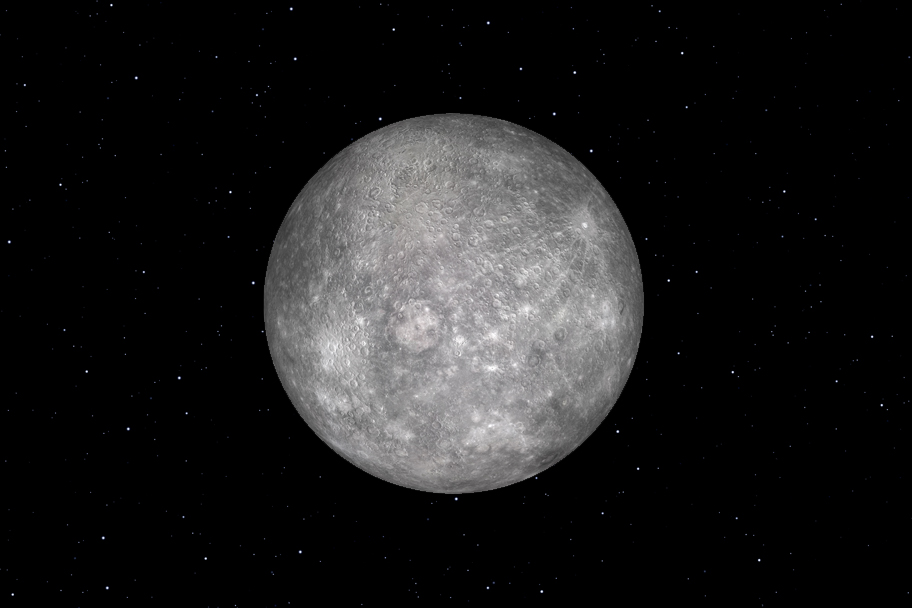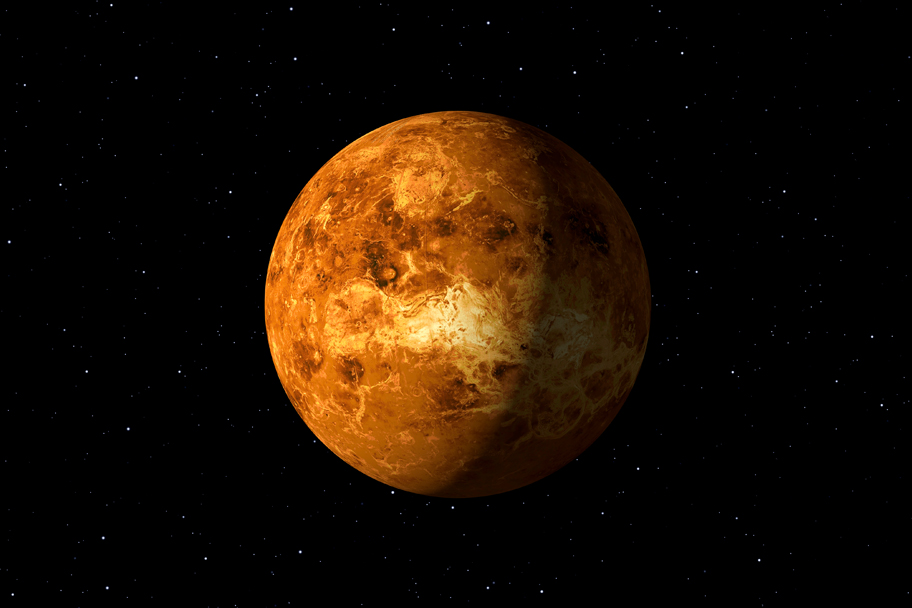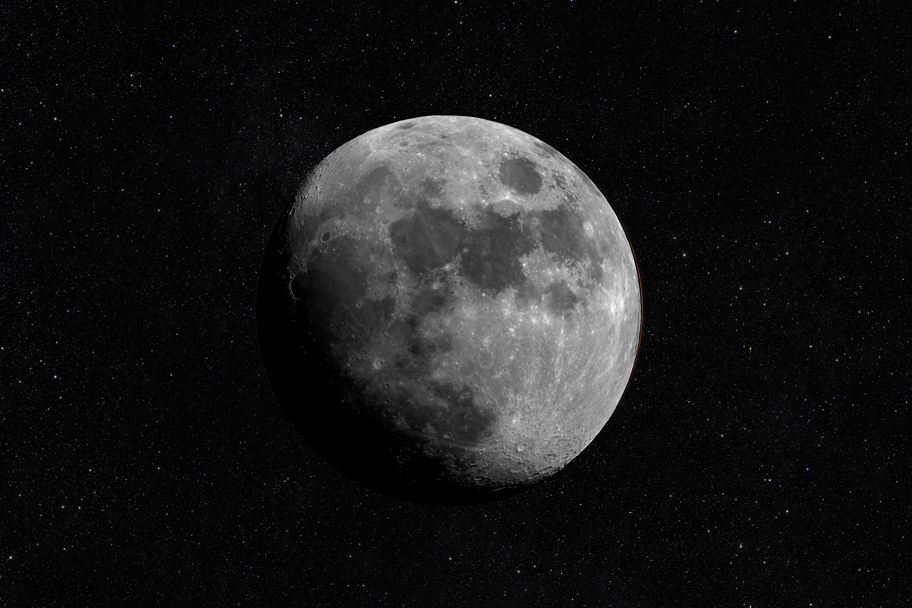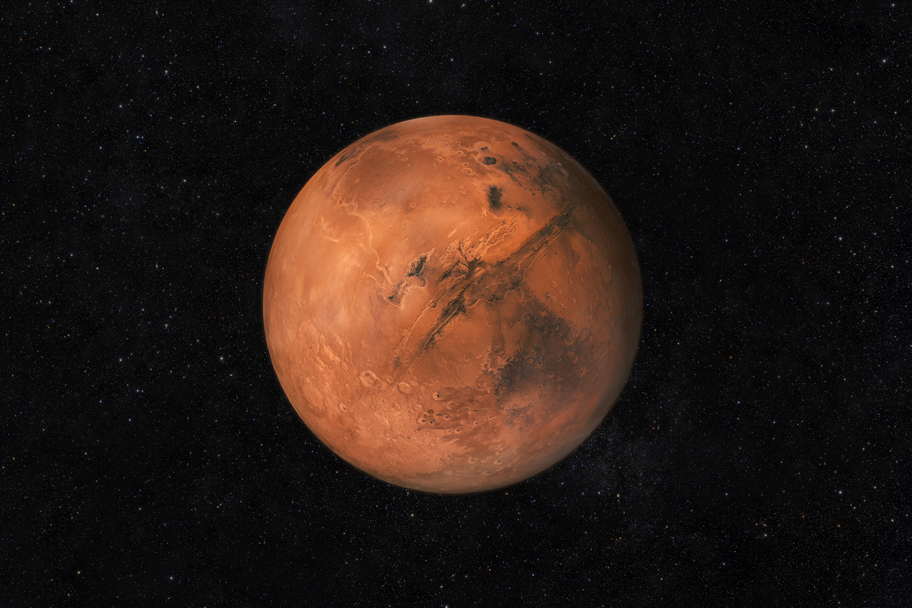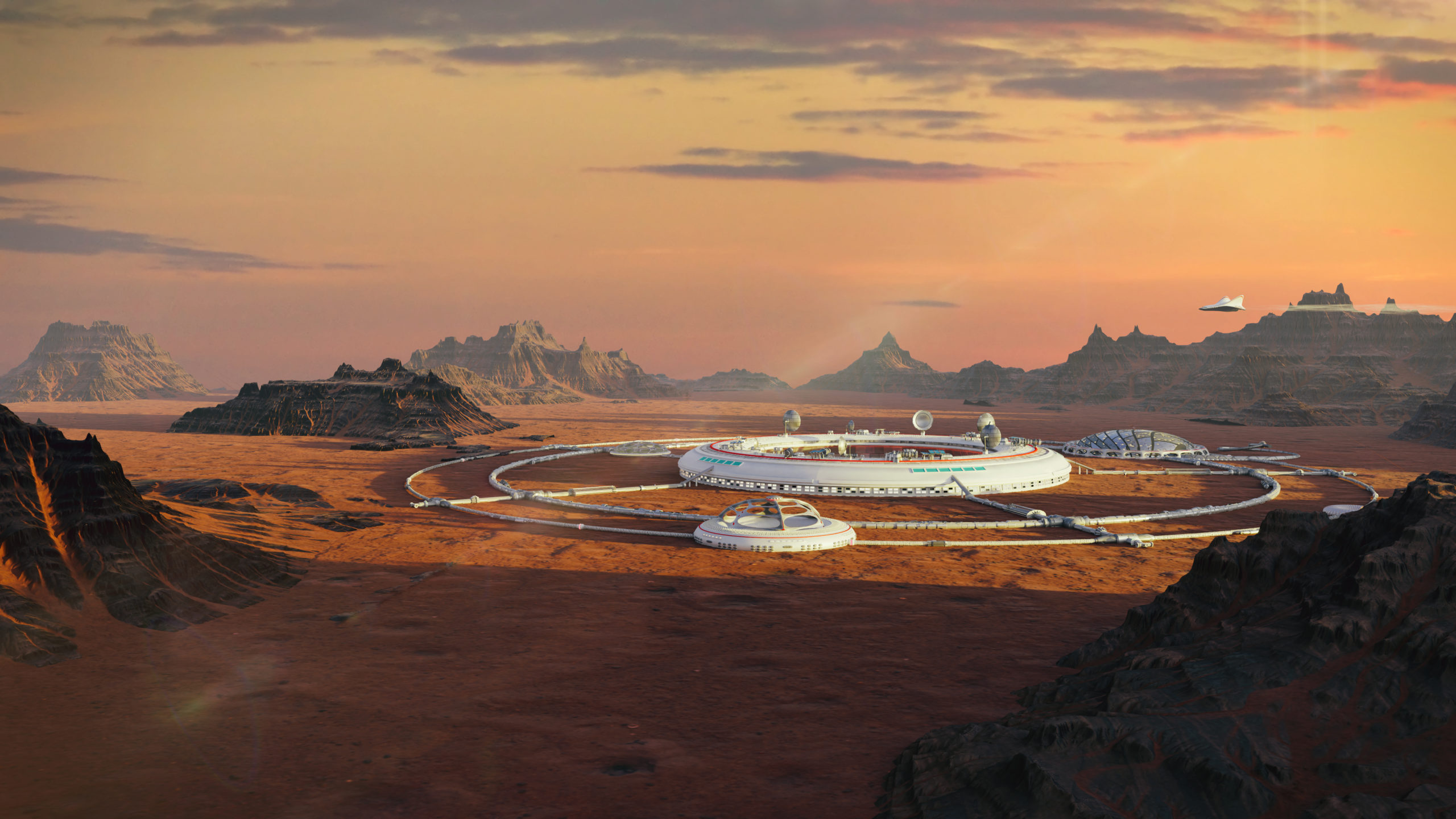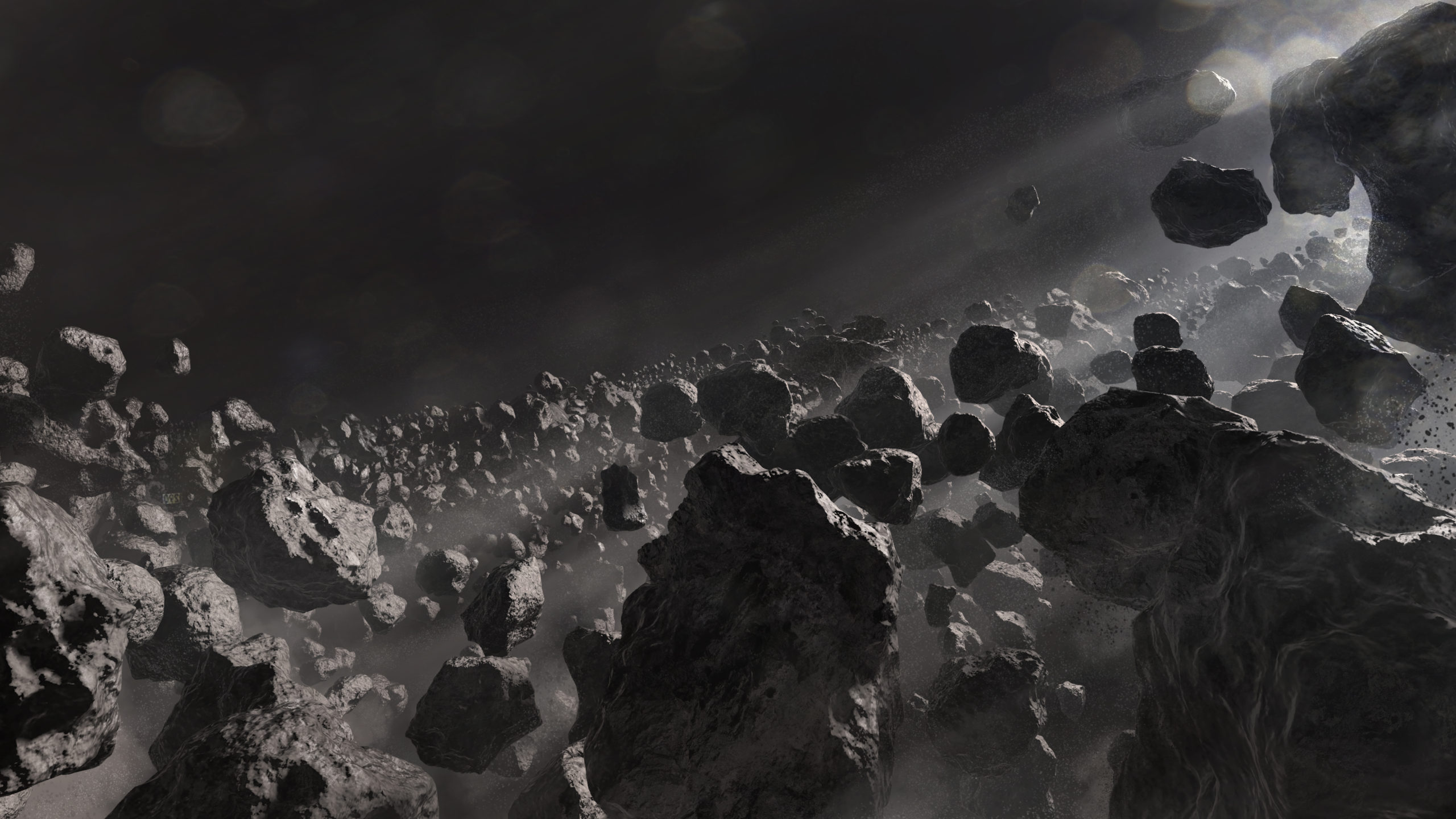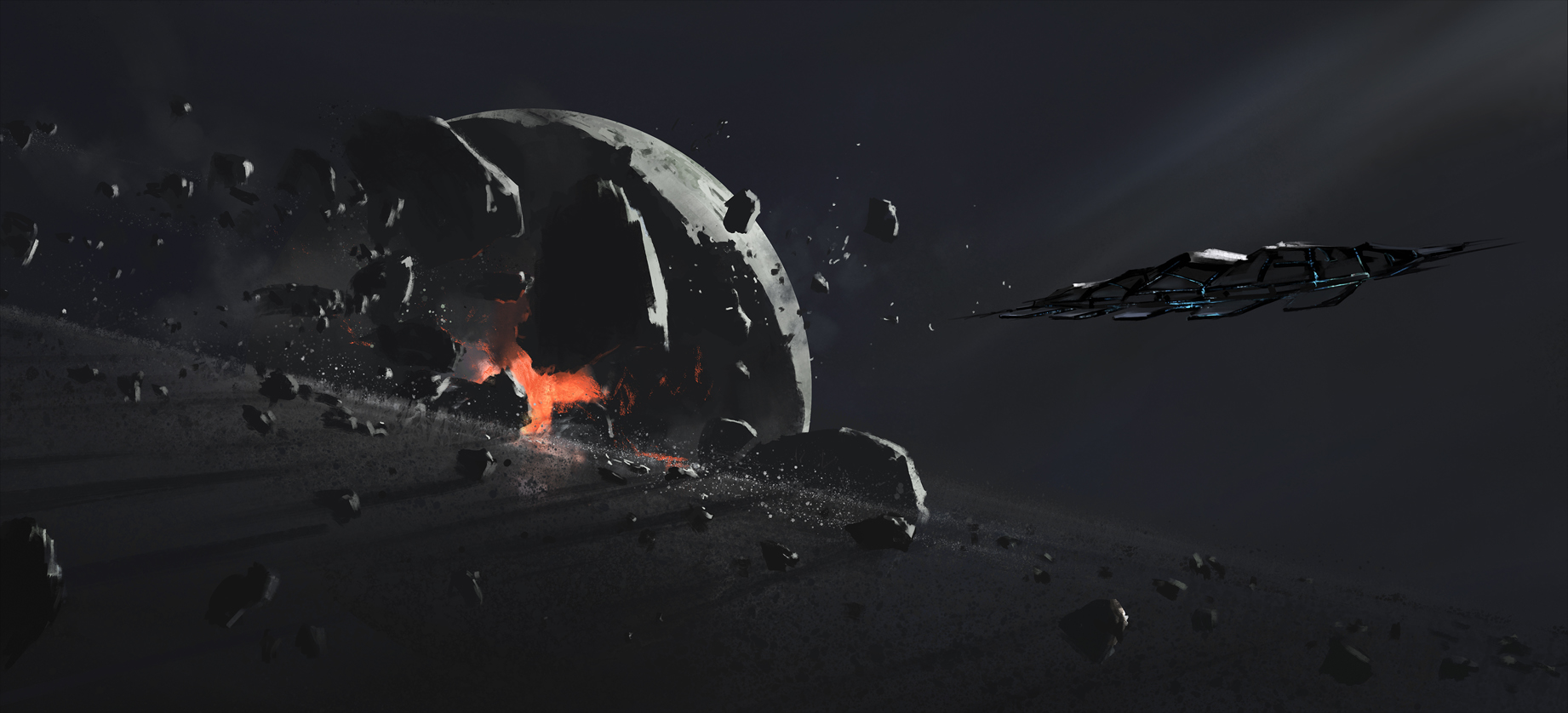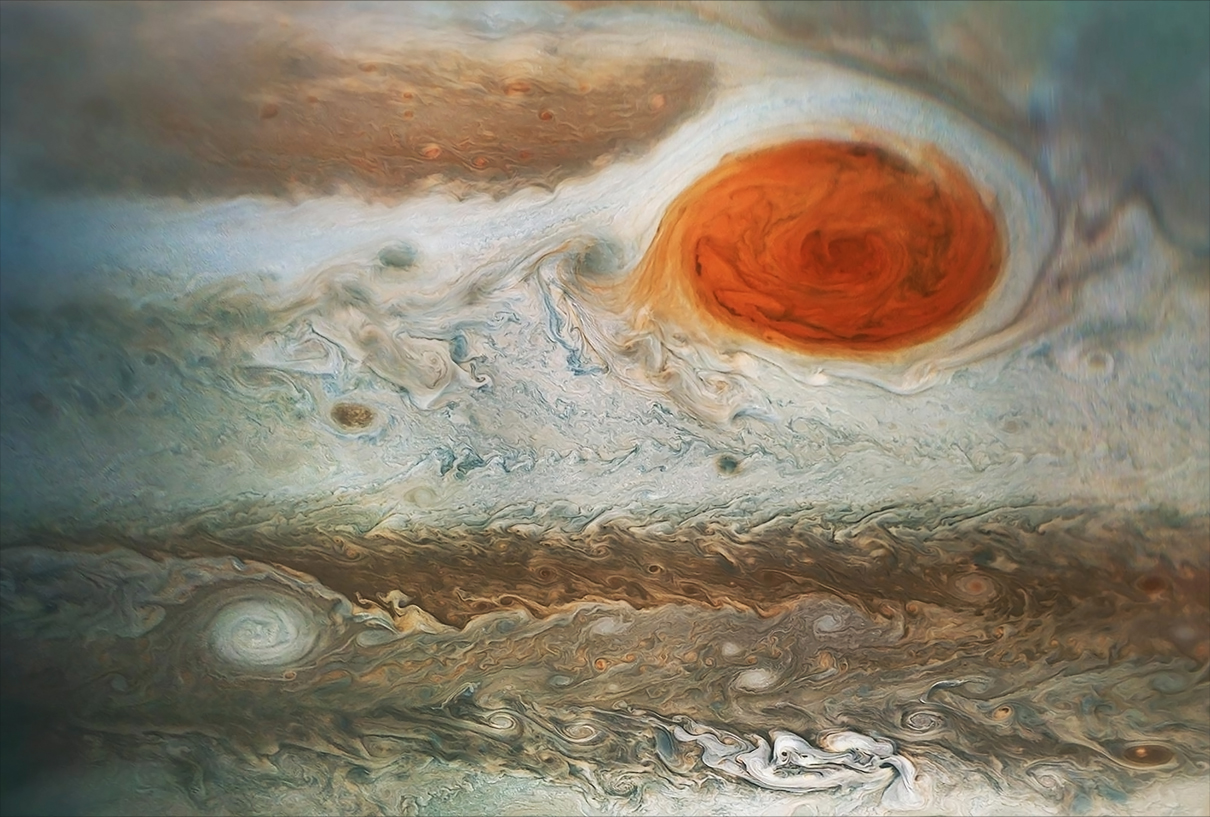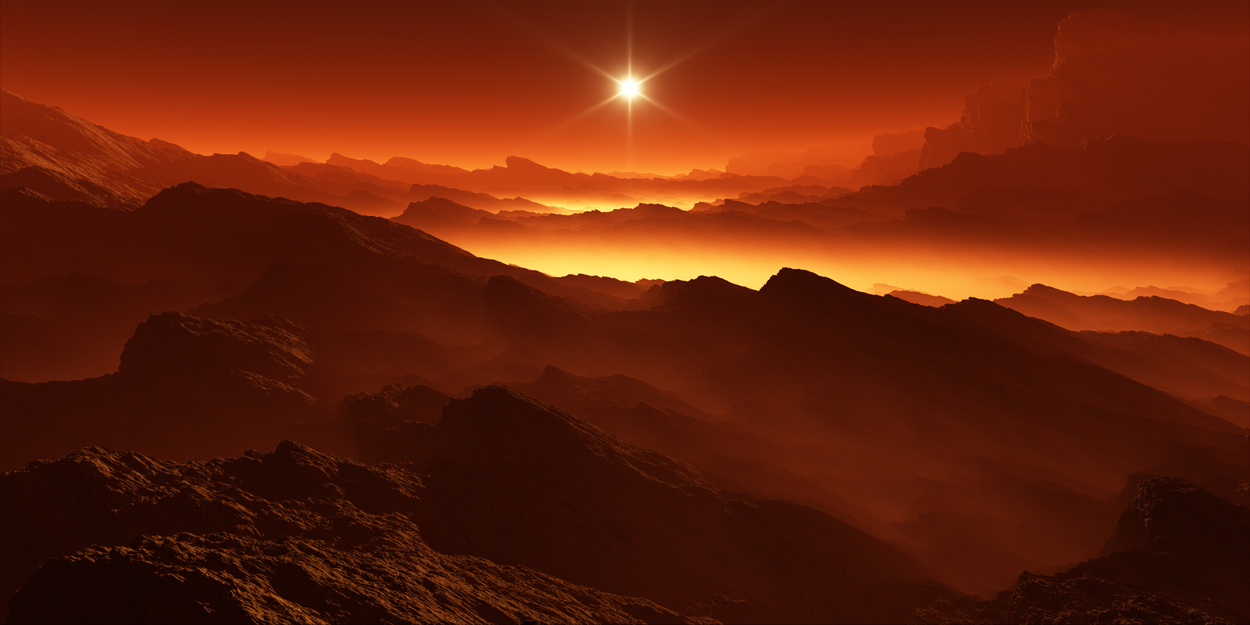The Home System

“The universe is our birthright. “
~Mary Ketch
Thanks to the invention of the superluminal drive, humanity has finally gained the means to establish itself as an interstellar civilization, spreading into the vast frontier of space beyond the edges of its home solar system. Although the ability to travel to other stars has forever changed the limits of human potential, the utility of the physics-breaking speed of superluminal technology has had an even greater impact in our own stellar backyard.
With conventional spacecraft, a simple trip to the moon or Mars cost billions of dollars, demanded hundreds of thousands of collective labor hours, and allowed no margin for error. A trip to the moon took days, a trip to Mars took months. Spacecraft required tremendous amounts of fuel simply to escape Earth’s gravity, and every gram of cargo was prohibitively costly. Building a permanent facility on another planetary body was an incredibly challenging undertaking, since the cost of delivering building supplies was so steep.
With the arrival of the superluminal drive, these obstacles disappeared. Traveling faster than the speed of light, a trip from Earth to Mars went from being a months-long voyage to a casual day trip. Superluminal ships could travel farther and faster with less fuel, and their cargo capacity was limited only by how big the ship could be built.
In just a few scant years, Earth’s solar system transformed from a vast, unknowable void to an easily traversable neighborhood. Permanent colonies were built on almost every body large enough to support a gravity well, and optimistic terraforming projects began on Mars and Venus. Slowly, humans began to regard themselves not as children of Earth, but as children of the solar system.
While still labeled on star charts and official documentation as the Sol System, Earth’s cosmic neighborhood is now most commonly referred to colloquially as “Home System.” Citizens of Earth and the offworld colonies alike look at the colonization of the system with pride: a bold testament to humanity’s perseverance and ambition, emerging from the dark shadow of the Corsica Event.
Mercury
Mercury offers risk and reward in equal measure to human settlers. With its tidally locked rotation, it takes 176 Earth days for the sun to set on the small planet. Mercury’s dayside hemisphere is perpetually bombarded with blinding light, blistering heat, and deadly solar radiation, while the opposite surface plummets into frigid, icy blackness.
Its unforgiving temperature extremes leave Mercury unsuitable for long-term human habitation, but enterprising corporations have found ways to capitalize on its unique orbital mechanics and proximity to the Sun. Vast, sprawling solar farms lie scattered across the planet’s surface, gathering tremendous amounts of energy into collection cells that are harvested as the farms go dormant after the long-awaited sunset. Construction and repair teams perform maintenance on these solar farms during the equally long night cycle, using some of the harvested power to prevent the installations from freezing over during Mercury’s freezing months-long midnight hours.
Mercury is highly mineral-rich, with an unusually dense composition for its small size. It has an especially high concentration of heavy elements, which are found less prevalently in the more accessible mining ranges of the asteroid belts. This has made Mercury a primary source of mining within the Home System, with corporations like Exotech operating massive mobile strip-mining facilities on the planet’s nightside. This practice has become less common in recent years, as international sanctions and the Home System Worlds Sacrosanctity Act of 2170 have placed limitations on the kinds of mining practices that may be conducted on planets and moons in the Home System, leading many corporations to take those operations outsystem.
Mercury’s environment has made it an ideal testing ground for developing technologies for the exploration of exoplanets with similarly inhospitable environments, such as Miloro and Buyan. During the border conflict between the Colonial Hegemony and the Expansionary Coalition on the sun-drenched planet Buyan, both factions used Mercury to test sun-proofing adaptations to their starships and atmospheric craft.
Venus
Despite its logistical challenges, Venus is the strongest candidate for terraforming in the Sol System. Though Mars offers less resistance to the terraforming process, Venus’s Earth-like gravity and chemical diversity grants it the greatest long-term potential.
The greatest hindrances to the terraforming process lie in its caustic, high-pressure atmosphere and the superheated volatility of its climate. It is not presently feasible to establish a permanent presence on Venus’ surface, due to the constant extreme heat and frequent storms of sulfuric acid rain, but a series of sprawling, interconnected industries are working steadily to alleviate these concerns.
Above the cloud layer, Venus’ upper atmosphere is comparatively mild, allowing airborne structures to inhabit the space with minimal concerns beyond acid weatherproofing. Utilizing an inverse application of the same technology that allows for superluminal travel, Exotech Industries developed a means of constructing permanent airborne structures that sit within a cradle of artificially simulated mass. This allowed for the construction of a series of floating cities. These cities would become the staging areas for the Venusian terraforming program, although some, like the Vinalia colony, would become large and populous enough to sustain their own economies.
Venus’s industry is built entirely around the terraforming effort, which is jointly funded by the Colonial Hegemony, the Expansionary Coalition, and the Outer Arab Emirates. The Venusian terraforming program is the largest and most ambitious project in the Home System, featuring some of the largest construction projects ever undertaken and consuming more than fifty percent of all resources harvested in the system.

Currently, the primary task of terraformers is the thinning and compositional altering of the planet’s atmosphere, which is done in a multipart process across the planet. High-powered orbital directed-energy drills continuously perforate the planet’s surface with boreholes injecting into the mantle, stimulating the formation of carbonate minerals and freeing carbon from the atmosphere. Simultaneously, colossal vortex ejection chimneys across the planet siphon the dense atmosphere directly into space through controlled mass de-simulation fields. These ejections serve a dual purpose, as they also produce a tremendous amount of thrust, and the careful angling of these atmospheric plumes is slowly increasing the planet’s spin.
As carbon dioxide is filtered from the air, oxygen and hydrogen are introduced. Ice shepherds tow cometary bodies from the Kuiper belt and the scattered disk to Venus, bombarding the planet with a steady barrage of icy bodies. Each drop releases desperately needed hydrogen into the air, in an energetic reaction that creates large bursts of oxygen. Elsewhere, oxygen is produced in a slower but steadier process as air farms cultivate genetically-modified acidophilic algae, raking them into the lower atmosphere through broad vanes from areal platforms. These algae propagate in the clouds, slowly but steadily converting carbon dioxide into oxygen.
Parallel to the terraforming work on the planet’s surface, construction is well underway on a massive space station at Venus’s L1 Lagrange point. When completed, the station will project a magnetic dipole shield to protect Venus from the solar wind, compensating for the planet’s lack of a natural magnetosphere.
Despite the vast scope of the current terraforming effort, it will likely take a century or more for Venus to approach the intended levels of habitability, and public support of the project is far from universal. Many believe the resources spent on the project would be put to better use on Earth, where reconstruction and recovery from the Corsica Event is still ongoing in many parts of the world. Offworld support of the project has declined in recent years, however the rate of decline has been offset by the rising population of Venus itself, where several of the largest colonies are approaching total self-sustainability.
Luna
Earth’s moon holds a unique place in the Home System’s history, not merely as the first astronomical body visited by human explorers, but as the only astronomical body colonized by humans before the creation of the superluminal drive.
In 2085, the Chinese government, in collaboration with the Ming Construction Corporation, established the Changxi research outpost: a small permanent base on the lava plain of Mare Imbrium. This was to be the first stage of the ambitious Changxi program: a planned twenty-year space program to test the viability of long-term habitation on Luna.
Shortly after the arrival of the second of the planned five resupply and crew changeover missions, the Changxi program ended in disaster. In 2092, the Corsica Event struck without warning, causing carnage and devastation across the Earth. While China recovered more quickly than most other major nations, they were in no position to continue the tremendously expensive Changxi program, and were left with no choice but to cancel it prematurely, leaving ten taikonauts behind.
Three members of the crew committed suicide shortly after receiving news of their abandonment, in an act of self-sacrifice to extend the limited consumable resources for the rest of the crew as long as possible. Three more would do the same in the following years, though accounts conflicted as to whether these suicides were also acts of self-sacrifice or motivated by despair in a hopeless situation. Eventually, as the situation on the Changxi outpost grew grimmer by the day, all communication from the moon finally ceased.

Ten years after the Corsica Event, Exotech Industries developed the superluminal drive. The Chinese government sponsored one of Exotech’s earliest test flights, under the condition that this flight would be used to retrieve the bodies and collected research from the Changxi expedition. The findings from that flight have never been made public, though an internal Exotech data leak indicated that, against all odds, one of the taikonauts survived after almost eleven years in isolation on the lunar surface. The survivor’s identity is unknown, but it is believed the extreme isolation and deprivation left the survivor’s body and mind in a dire state.
As the creation of the superluminal drive facilitated space travel on a level never before considered, the role of Lunar colonization in humanity’s plans for space exploration shifted. Luna had long been seen as a necessary staging area for missions to Mars and the outer planets, but the superluminal drive allowed those kinds of voyages to be undertaken without any need for intermediary stages. Additionally, the sheer speed and simplicity of superluminal flight allowed trips to the moon to be taken with little more expense or challenge than a transoceanic aircraft flight. Luna could now be colonized with ease on a massive scale, and without a need to specialize those colonies for use in other space programs, there was no cap on the potential any colony could achieve.
Through the use of mass-simulation technology, Lunar colonies were able to generate artificial Earth-like gravity, easily facilitating permanent habitation without fear of the deteriorating effects of reduced gravity on the human musculoskeletal structure. While buildings still had to be pressurized, the ease with which building supplies and consumables could be brought allowed the construction of massive, sprawling cities across Luna’s surface, rivalling some found on Earth.
Most of the early civilian colonization efforts on Luna were financed by megacorporations such as Exotech and Ming-Kosawa. These projects drew public accusations of economic elitism, as only the super-wealthy could afford to inhabit the new lunar bases, and were choosing to do so rather than devote efforts to improving conditions on the Corsica-ravaged Earth. While these corporate-sponsored colonization projects would eventually make token gestures to offer greater inclusivity to the disadvantaged, decades later Luna is still primarily inhabited by the upper class, and living or commuting to Luna is a mark of high status.
Luna’s well-funded colonies have produced elite institutions that rival the best on Earth. Crisium University in particular is known throughout the colonies as the most prestigious center of higher learning on any world. Crisium offers curricula in almost every field, but specializes in the sciences, particularly in robotics, physics, and singularitology. Many of the most groundbreaking discoveries of the latter half of the 22nd century have been made by Crisium graduates and faculty.
Intrasystem Machine Intelligence Defence Command, or IMID, operates a massive military complex beneath Luna’s second-largest mountain, Mons Hadley. IMID is a joint task force between Expansionary Coalition and Colonial Hegemony armed forces with the sole mission of developing countermeasures against a second Corsica Event. While the Mons Hadley complex is primarily devoted to AI and anti-AI research and development, it also houses a significant number of troops, missile silos, combat spacecraft, and armored attack rovers to protect the base and the vital top-secret projects inside.
Despite the impressive defense force, a mercenary team led by Jay Serpentico managed to circumvent almost all of it, infiltrating the Mons Hadley complex and stealing a prototype piece of “Corsica Killer” technology called Project Hemipepsis before vanishing without a trace. What became of Serpentico’s mercenaries and Project Hemipepsis following this daring heist remains unknown to this day.
Mars
While Venus has the greatest long-term potential for terraforming in the Home System, Mars is a far more productive project in the short-term. Its weaker gravity and distance from the Sun hinder its overall potential, but its mild atmospheric conditions and accessible terrain make it much better suited for immediate habitation.
The initial stage of the terraforming effort consisted of the Eckhart Project, which involved the use of directed energy drills into Mars’ lower mantle and the deployment of high-yield thermonuclear detonations to excite dynamo action in the core. Though this led to an increase in seismic and volcanic instability on the surface, it achieved the intended goal of reactivating Mars’s long dead core, and the planet has begun to form a natural magnetosphere once again.
At the polar icecaps, Martian terraformers performed several more controlled nuclear detonations. These explosions dispersed billions of tons of vaporized water ice into the atmosphere. Ice shepherds hauling cometary bodies from the Kuiper belt supply more vital hydrogen and oxygen to the planet’s atmosphere. Flourine compounds such as sulfur hexafluoride are mined and produced on Io and the other Jovian moons and shipped to Mars for dispersal into the atmosphere, enhancing the planet’s greenhouse effect.
The extensive use of thermonuclear detonations combined with bombardment of cometary bodies has produced an enormous dust cloud, which, for the first three decades of the terraforming project, almost entirely blocked all sunlight from the surface. While this would typically result in a nuclear winter, it actually produced the opposite effect by trapping the heat generated by the planet’s newly activated volcanism and preventing its dissipation into space.
Despite the amplified seismic activity and sky-darkening ash cloud, Mars was readily accessible for colonization during the terraforming process. Pressurized structures similar to the ones built on Luna made Martian habitation easy, and artificial gravity produced by mass simulation fields allowed humans to inhabit the small planet in perfectly controlled Earth-like conditions.
While the initial colonization efforts were primarily conducted by corporations, as they had been on Luna, numerous Earth governments also made concerted efforts to build large-scale colonial habitats on the Red Planet. The initial cost of establishing a foothold for these colonies was high, but Mars yielded enough of its own resources that future expansions to the first Martian colonies could be completed internally. The first Martian settlers quickly became largely self-sufficient, matching the cost of importing materials they could not produce themselves by exporting iron and other resources they possessed in abundance.
The Martian colonies expanded quickly, reaching city-like sizes after only one generation. The close-quarters nature of the habitation structures have led Martian colonists to form close social bonds with one another. Uniquely Martian cultures have already begun to form due to the blending of Earth cultural influences within insulated community spaces. This has led to the formation of unusual creole cultures that are unique to each Martian habitation complex, such as the unlikely blend of Irish and Chinese cultural influences in the New Belfast colony.
Mars’s population growth rate is the fastest of any planet in the Home System besides Earth, and it is rivaled only by Showalter in terms of colonial expansion rate. With its booming population and rapidly evolving cultural distinctiveness, Mars is already well on its way to becoming a proper homeworld in its own right.
The Asteroid Belts
Asteroid mining is the largest industry in the Home System, and has been the primary driver of the system’s economy ever since the invention of the superluminal drive. With the Earth in dire need of resources to rebuild after the Corsica Event and the vast mineral wealth of the asteroid belts suddenly accessible on a scale never before imagined, the choice was obvious.
Exotech Industries took advantage of their monopoly on superluminal drive technology by cornering the market on asteroid mining immediately. Exotech had the privilege of being able to produce as many mining ships as desired and the ability to completely offset the production cost by using materials harvested by those very same ships to produce those that followed. While many nations and multinational alliances commissioned Exotech to produce mining fleets for them, it was often more convenient to simply purchase the materials Exotech mined for them.
Exotech’s domination of the asteroid mining industry persisted long after they lost their monopoly on superluminal drive technology, and they retain nearly ninety percent control over the entire industry.
The earliest methods employed by Exotech for extracting resources from asteroids involved extensive use of a practice known as “shatter mining,” where asteroids would be blown apart by nuclear explosives to reveal the valuable metals inside. This practice has been widely criticized as needlessly wasteful, as it results in most of the asteroid’s material being lost as scattered rubble dispersed into open space. Nevertheless, Exotech continued the practice for decades before adopting more responsible forms of mining that yielded slower but more efficient returns.
Most asteroid mining is now done by so-called “rock jockeys,” who scout for resource-heavy asteroids in swift ships, fit promising candidates with mass de-simulation generators and propulsion systems, and pilot the captured objects to their destinations. Icy bodies such as comets are typically towed directly to either Venus or Mars for use in their terraforming projects, while asteroids and meteoroids are towed to breaker rigs.
Breaker rigs are enormous, semi-mobile spacecraft designed to break down and render a captured rock into its base materials. Many rigs are designed to completely house a captured rock, carving it into smaller pieces with high-powered lasers if it is too large to fit. Some breaker rigs consist of little more than an expansive scaffolding system joined together with nets and attached to a set of smelting, processing, and storage modules. However, some rigs are built from the hollowed remains of larger asteroids, artificially reinforced and filled with machinery and life support systems for their crews.
Comets are also often harvested by starships called comet chasers. These large vessels are built with an extendable umbrella-shaped mouth at the prow, designed to funnel vented gasses and particles from a comet’s tail into internal processing systems. Comet chasers are often fitted with high-powered railguns, allowing them to break smaller cometary bodies into chunks, which they can harvest easily. Each comet chaser contains its own highly-efficient processing factory, which it can use to convert captured ice into tightly compressed gas cylinders and captured metals into finely processed ingots. A single comet chaser can completely process a medium-sized comet in a matter of weeks.
Excess shatter mining has resulted in what asteroid miners call a “rock drought.” While the Main belt and the Kuiper belt are still filled with millions of astronomical bodies, most of the largest and most resource plentiful ones have now been destroyed or depleted. Technically these vast debris fields still hold enough mineral wealth to support every conceivable human need for thousands of years, but they are spread so thin that the mining industry yields less and less product each year. Exotech and other mining entities have begun shifting their focus to the untapped potential of exoplanets such as Miloro, Scartaris, and Tantalus 13.
The Outer Planets and Moons
Nearly every moon of Jupiter, Saturn, and Uranus has a permanent mining presence on it. Ganymede hosts the primary staging area where mining operations across the Jovian moon system are coordinated, while Titan serves a similar purpose for Saturn. Both moons serve as the primary civilian habitation centers for their respective systems and have significant long-term colonial populations within pressurized dome systems.
Io’s extreme volcanic activity has made it a particularly valuable source of mineral resources, though extracting them is hazardous. The Argos Mining Syndicate conducts the majority of the moon’s mining operations, housing miners in specially designed exosuits designed to shield them from the moon’s various hazards, particularly Jupiter’s unforgiving radiation field.
By day, miners on Io operate heavy drilling equipment to extract the metals and sulfates on Io’s lava fields. At night, and when Jupiter eclipses the sun, Io’s atmosphere freezes to its surface into ice sheets, which miners also harvest and process. The combination of Io’s high volcanic volatility, dramatic temperature changes, and constant radiation exposure make the Argos mining fields one of the most dangerous workplaces in the solar system.
Europa became one of the most important bodies in the Home System as soon as life was discovered beneath its vast ice sheets. Though limited mainly to chemosynthetic microorganisms that gather around thermal vents on the floors of Europa’s iced-over oceans, the first discovery of extraterrestrial life nevertheless rocked the scientific community. International accords quickly declared the moon a protected body, preserving it from the mining industry and limiting colonization to scientific research purposes only.
In the decades since the discovery of the first life forms on Europa, scientists have catalogued dozens of unique organisms in the moon’s lightless depths. Most are still simple prokaryotic microbial life, but small organisms analogous to sponges, placozoans, and nematodes have since been discovered. Beiranida jormungandra, a tiny transparent worm similar to Earth’s polychaetes, remains the most complex extraterrestrial organism yet discovered.
While Europa remains the only astronomical body in the Home system known to bear extraterrestrial life, similar environmental conditions on Enceladus have many scientists optimistic that life could be found there as well.
Though direct visitation of the gas giants themselves is all but impossible, Exotech Industries has undertaken a unique challenge to visit one of the least accessible locations in the system: the eye of Jupiter’s Great Red Spot.
Exotech has built an immense structure called a Bhandari corridor: a series of synchronously aligned orbital rings that project continuous overlapping cylindrical mass de-simulation fields over each other. Arranged like a segmented straw thousands of miles long, the Bhandari corridor is the longest human-made structure ever built, if the space between rings is considered part of the structure.
The Bhandari corridor extends from the center of the Great Red Spot to a point near the orbit of Metis. Starships entering the upper access point can fly through the Bhandari corridor without experiencing any interactions with Jupiter’s gravity, radiation, or atmospheric pressure thanks to the physics-masking effects of the de-simulation field.
At the lower end of the Bhandari corridor sits a space station simply referred to as the Squall Installation: the most remote inhabited location in the universe. Here Exotech performs research that requires access to the extreme conditions that can only be found in the uniquely intense conditions of the strongest storm in explored space.
Exotech built Squall Installation and the Bhandari corridor at tremendous up-front expense, and it is widely believed that the atmospheric data the Squall gathers could never possibly justify the expense. It has been suspected that the Squall has a secret, darker secondary purpose: a testing facility where Exotech conducts experiments it would never want the public to learn of. Exotech vehemently dismisses these rumors, but the Squall’s projects are still conducted with virtually no external oversight of any kind.

The Home System

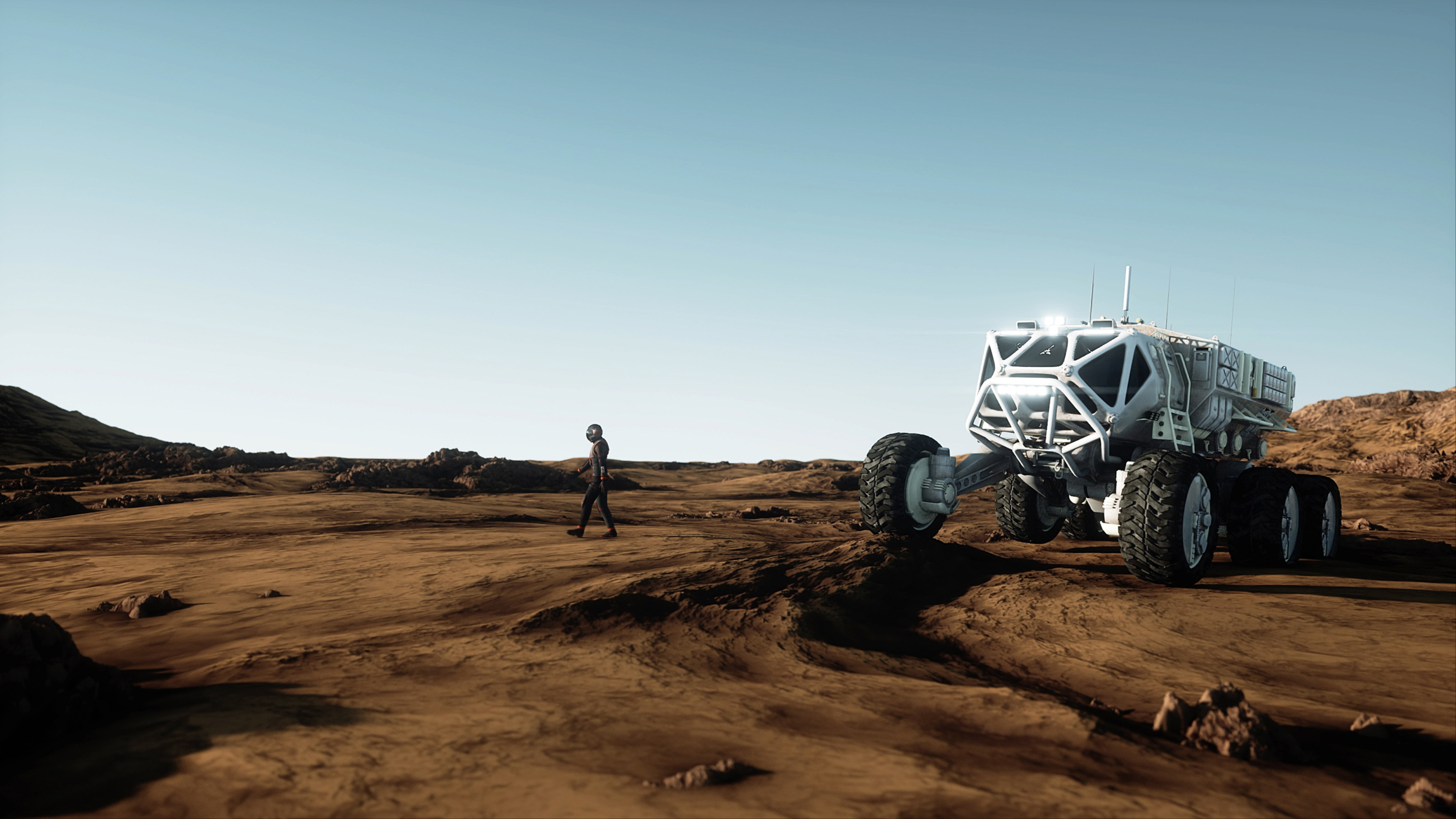
“The universe is our birthright. “
~Mary Ketch
Thanks to the invention of the superluminal drive, humanity has finally gained the means to establish itself as an interstellar civilization, spreading into the vast frontier of space beyond the edges of its home solar system. Although the ability to travel to other stars has forever changed the limits of human potential, the utility of the physics-breaking speed of superluminal technology has had an even greater impact in our own stellar backyard.
With conventional spacecraft, a simple trip to the moon or Mars cost billions of dollars, demanded hundreds of thousands of collective labor hours, and allowed no margin for error. A trip to the moon took days, a trip to Mars took months. Spacecraft required tremendous amounts of fuel simply to escape Earth’s gravity, and every gram of cargo was prohibitively costly. Building a permanent facility on another planetary body was an incredibly challenging undertaking, since the cost of delivering building supplies was so steep.
With the arrival of the superluminal drive, these obstacles disappeared. Traveling faster than the speed of light, a trip from Earth to Mars went from being a months-long voyage to a casual day trip. Superluminal ships could travel farther and faster with less fuel, and their cargo capacity was limited only by how big the ship could be built.
In just a few scant years, Earth’s solar system transformed from a vast, unknowable void to an easily traversable neighborhood. Permanent colonies were built on almost every body large enough to support a gravity well, and optimistic terraforming projects began on Mars and Venus. Slowly, humans began to regard themselves not as children of Earth, but as children of the solar system.
While still labeled on star charts and official documentation as the Sol System, Earth’s cosmic neighborhood is now most commonly referred to colloquially as “Home System.” Citizens of Earth and the offworld colonies alike look at the colonization of the system with pride: a bold testament to humanity’s perseverance and ambition, emerging from the dark shadow of the Corsica Event.
Mercury
Mercury offers risk and reward in equal measure to human settlers. With its tidally locked rotation, it takes 176 Earth days for the sun to set on the small planet. Mercury’s dayside hemisphere is perpetually bombarded with blinding light, blistering heat, and deadly solar radiation, while the opposite surface plummets into frigid, icy blackness.
Its unforgiving temperature extremes leave Mercury unsuitable for long-term human habitation, but enterprising corporations have found ways to capitalize on its unique orbital mechanics and proximity to the Sun. Vast, sprawling solar farms lie scattered across the planet’s surface, gathering tremendous amounts of energy into collection cells that are harvested as the farms go dormant after the long-awaited sunset. Construction and repair teams perform maintenance on these solar farms during the equally long night cycle, using some of the harvested power to prevent the installations from freezing over during Mercury’s freezing months-long midnight hours.
Mercury is highly mineral-rich, with an unusually dense composition for its small size. It has an especially high concentration of heavy elements, which are found less prevalently in the more accessible mining ranges of the asteroid belts. This has made Mercury a primary source of mining within the Home System, with corporations like Exotech operating massive mobile strip-mining facilities on the planet’s nightside. This practice has become less common in recent years, as international sanctions and the Home System Worlds Sacrosanctity Act of 2170 have placed limitations on the kinds of mining practices that may be conducted on planets and moons in the Home System, leading many corporations to take those operations outsystem.
Mercury’s environment has made it an ideal testing ground for developing technologies for the exploration of exoplanets with similarly inhospitable environments, such as Miloro and Buyan. During the border conflict between the Colonial Hegemony and the Expansionary Coalition on the sun-drenched planet Buyan, both factions used Mercury to test sun-proofing adaptations to their starships and atmospheric craft.
Venus
Despite its logistical challenges, Venus is the strongest candidate for terraforming in the Sol System. Though Mars offers less resistance to the terraforming process, Venus’s Earth-like gravity and chemical diversity grants it the greatest long-term potential.
The greatest hindrances to the terraforming process lie in its caustic, high-pressure atmosphere and the superheated volatility of its climate. It is not presently feasible to establish a permanent presence on Venus’ surface, due to the constant extreme heat and frequent storms of sulfuric acid rain, but a series of sprawling, interconnected industries are working steadily to alleviate these concerns.
Above the cloud layer, Venus’ upper atmosphere is comparatively mild, allowing airborne structures to inhabit the space with minimal concerns beyond acid weatherproofing. Utilizing an inverse application of the same technology that allows for superluminal travel, Exotech Industries developed a means of constructing permanent airborne structures that sit within a cradle of artificially simulated mass. This allowed for the construction of a series of floating cities. These cities would become the staging areas for the Venusian terraforming program, although some, like the Vinalia colony, would become large and populous enough to sustain their own economies.
Venus’s industry is built entirely around the terraforming effort, which is jointly funded by the Colonial Hegemony, the Expansionary Coalition, and the Outer Arab Emirates. The Venusian terraforming program is the largest and most ambitious project in the Home System, featuring some of the largest construction projects ever undertaken and consuming more than fifty percent of all resources harvested in the system.

Currently, the primary task of terraformers is the thinning and compositional altering of the planet’s atmosphere, which is done in a multipart process across the planet. High-powered orbital directed-energy drills continuously perforate the planet’s surface with boreholes injecting into the mantle, stimulating the formation of carbonate minerals and freeing carbon from the atmosphere. Simultaneously, colossal vortex ejection chimneys across the planet siphon the dense atmosphere directly into space through controlled mass de-simulation fields. These ejections serve a dual purpose, as they also produce a tremendous amount of thrust, and the careful angling of these atmospheric plumes is slowly increasing the planet’s spin.
As carbon dioxide is filtered from the air, oxygen and hydrogen are introduced. Ice shepherds tow cometary bodies from the Kuiper belt and the scattered disk to Venus, bombarding the planet with a steady barrage of icy bodies. Each drop releases desperately needed hydrogen into the air, in an energetic reaction that creates large bursts of oxygen. Elsewhere, oxygen is produced in a slower but steadier process as air farms cultivate genetically-modified acidophilic algae, raking them into the lower atmosphere through broad vanes from areal platforms. These algae propagate in the clouds, slowly but steadily converting carbon dioxide into oxygen.
Parallel to the terraforming work on the planet’s surface, construction is well underway on a massive space station at Venus’s L1 Lagrange point. When completed, the station will project a magnetic dipole shield to protect Venus from the solar wind, compensating for the planet’s lack of a natural magnetosphere.
Despite the vast scope of the current terraforming effort, it will likely take a century or more for Venus to approach the intended levels of habitability, and public support of the project is far from universal. Many believe the resources spent on the project would be put to better use on Earth, where reconstruction and recovery from the Corsica Event is still ongoing in many parts of the world. Offworld support of the project has declined in recent years, however the rate of decline has been offset by the rising population of Venus itself, where several of the largest colonies are approaching total self-sustainability.
Luna
Earth’s moon holds a unique place in the Home System’s history, not merely as the first astronomical body visited by human explorers, but as the only astronomical body colonized by humans before the creation of the superluminal drive.
In 2085, the Chinese government, in collaboration with the Ming Construction Corporation, established the Changxi research outpost: a small permanent base on the lava plain of Mare Imbrium. This was to be the first stage of the ambitious Changxi program: a planned twenty-year space program to test the viability of long-term habitation on Luna.
Shortly after the arrival of the second of the planned five resupply and crew changeover missions, the Changxi program ended in disaster. In 2092, the Corsica Event struck without warning, causing carnage and devastation across the Earth. While China recovered more quickly than most other major nations, they were in no position to continue the tremendously expensive Changxi program, and were left with no choice but to cancel it prematurely, leaving ten taikonauts behind.
Three members of the crew committed suicide shortly after receiving news of their abandonment, in an act of self-sacrifice to extend the limited consumable resources for the rest of the crew as long as possible. Three more would do the same in the following years, though accounts conflicted as to whether these suicides were also acts of self-sacrifice or motivated by despair in a hopeless situation. Eventually, as the situation on the Changxi outpost grew grimmer by the day, all communication from the moon finally ceased.

Ten years after the Corsica Event, Exotech Industries developed the superluminal drive. The Chinese government sponsored one of Exotech’s earliest test flights, under the condition that this flight would be used to retrieve the bodies and collected research from the Changxi expedition. The findings from that flight have never been made public, though an internal Exotech data leak indicated that, against all odds, one of the taikonauts survived after almost eleven years in isolation on the lunar surface. The survivor’s identity is unknown, but it is believed the extreme isolation and deprivation left the survivor’s body and mind in a dire state.
As the creation of the superluminal drive facilitated space travel on a level never before considered, the role of Lunar colonization in humanity’s plans for space exploration shifted. Luna had long been seen as a necessary staging area for missions to Mars and the outer planets, but the superluminal drive allowed those kinds of voyages to be undertaken without any need for intermediary stages. Additionally, the sheer speed and simplicity of superluminal flight allowed trips to the moon to be taken with little more expense or challenge than a transoceanic aircraft flight. Luna could now be colonized with ease on a massive scale, and without a need to specialize those colonies for use in other space programs, there was no cap on the potential any colony could achieve.
Through the use of mass-simulation technology, Lunar colonies were able to generate artificial Earth-like gravity, easily facilitating permanent habitation without fear of the deteriorating effects of reduced gravity on the human musculoskeletal structure. While buildings still had to be pressurized, the ease with which building supplies and consumables could be brought allowed the construction of massive, sprawling cities across Luna’s surface, rivalling some found on Earth.
Most of the early civilian colonization efforts on Luna were financed by megacorporations such as Exotech and Ming-Kosawa. These projects drew public accusations of economic elitism, as only the super-wealthy could afford to inhabit the new lunar bases, and were choosing to do so rather than devote efforts to improving conditions on the Corsica-ravaged Earth. While these corporate-sponsored colonization projects would eventually make token gestures to offer greater inclusivity to the disadvantaged, decades later Luna is still primarily inhabited by the upper class, and living or commuting to Luna is a mark of high status.
Luna’s well-funded colonies have produced elite institutions that rival the best on Earth. Crisium University in particular is known throughout the colonies as the most prestigious center of higher learning on any world. Crisium offers curricula in almost every field, but specializes in the sciences, particularly in robotics, physics, and singularitology. Many of the most groundbreaking discoveries of the latter half of the 22nd century have been made by Crisium graduates and faculty.
Intrasystem Machine Intelligence Defence Command, or IMID, operates a massive military complex beneath Luna’s second-largest mountain, Mons Hadley. IMID is a joint task force between Expansionary Coalition and Colonial Hegemony armed forces with the sole mission of developing countermeasures against a second Corsica Event. While the Mons Hadley complex is primarily devoted to AI and anti-AI research and development, it also houses a significant number of troops, missile silos, combat spacecraft, and armored attack rovers to protect the base and the vital top-secret projects inside.
Despite the impressive defense force, a mercenary team led by Jay Serpentico managed to circumvent almost all of it, infiltrating the Mons Hadley complex and stealing a prototype piece of “Corsica Killer” technology called Project Hemipepsis before vanishing without a trace. What became of Serpentico’s mercenaries and Project Hemipepsis following this daring heist remains unknown to this day.
Mars
While Venus has the greatest long-term potential for terraforming in the Home System, Mars is a far more productive project in the short-term. Its weaker gravity and distance from the Sun hinder its overall potential, but its mild atmospheric conditions and accessible terrain make it much better suited for immediate habitation.
The initial stage of the terraforming effort consisted of the Eckhart Project, which involved the use of directed energy drills into Mars’ lower mantle and the deployment of high-yield thermonuclear detonations to excite dynamo action in the core. Though this led to an increase in seismic and volcanic instability on the surface, it achieved the intended goal of reactivating Mars’s long dead core, and the planet has begun to form a natural magnetosphere once again.
At the polar icecaps, Martian terraformers performed several more controlled nuclear detonations. These explosions dispersed billions of tons of vaporized water ice into the atmosphere. Ice shepherds hauling cometary bodies from the Kuiper belt supply more vital hydrogen and oxygen to the planet’s atmosphere. Flourine compounds such as sulfur hexafluoride are mined and produced on Io and the other Jovian moons and shipped to Mars for dispersal into the atmosphere, enhancing the planet’s greenhouse effect.
The extensive use of thermonuclear detonations combined with bombardment of cometary bodies has produced an enormous dust cloud, which, for the first three decades of the terraforming project, almost entirely blocked all sunlight from the surface. While this would typically result in a nuclear winter, it actually produced the opposite effect by trapping the heat generated by the planet’s newly activated volcanism and preventing its dissipation into space.
“The universe is our birthright. “
~Mary Ketch
Thanks to the invention of the superluminal drive, humanity has finally gained the means to establish itself as an interstellar civilization, spreading into the vast frontier of space beyond the edges of its home solar system. Although the ability to travel to other stars has forever changed the limits of human potential, the utility of the physics-breaking speed of superluminal technology has had an even greater impact in our own stellar backyard.
With conventional spacecraft, a simple trip to the moon or Mars cost billions of dollars, demanded hundreds of thousands of collective labor hours, and allowed no margin for error. A trip to the moon took days, a trip to Mars took months. Spacecraft required tremendous amounts of fuel simply to escape Earth’s gravity, and every gram of cargo was prohibitively costly. Building a permanent facility on another planetary body was an incredibly challenging undertaking, since the cost of delivering building supplies was so steep.
With the arrival of the superluminal drive, these obstacles disappeared. Traveling faster than the speed of light, a trip from Earth to Mars went from being a months-long voyage to a casual day trip. Superluminal ships could travel farther and faster with less fuel, and their cargo capacity was limited only by how big the ship could be built.
In just a few scant years, Earth’s solar system transformed from a vast, unknowable void to an easily traversable neighborhood. Permanent colonies were built on almost every body large enough to support a gravity well, and optimistic terraforming projects began on Mars and Venus. Slowly, humans began to regard themselves not as children of Earth, but as children of the solar system.
While still labeled on star charts and official documentation as the Sol System, Earth’s cosmic neighborhood is now most commonly referred to colloquially as “Home System.” Citizens of Earth and the offworld colonies alike look at the colonization of the system with pride: a bold testament to humanity’s perseverance and ambition, emerging from the dark shadow of the Corsica Event.
Mercury
Mercury offers risk and reward in equal measure to human settlers. With its tidally locked rotation, it takes 176 Earth days for the sun to set on the small planet. Mercury’s dayside hemisphere is perpetually bombarded with blinding light, blistering heat, and deadly solar radiation, while the opposite surface plummets into frigid, icy blackness.
Its unforgiving temperature extremes leave Mercury unsuitable for long-term human habitation, but enterprising corporations have found ways to capitalize on its unique orbital mechanics and proximity to the Sun. Vast, sprawling solar farms lie scattered across the planet’s surface, gathering tremendous amounts of energy into collection cells that are harvested as the farms go dormant after the long-awaited sunset. Construction and repair teams perform maintenance on these solar farms during the equally long night cycle, using some of the harvested power to prevent the installations from freezing over during Mercury’s freezing months-long midnight hours.
Mercury is highly mineral-rich, with an unusually dense composition for its small size. It has an especially high concentration of heavy elements, which are found less prevalently in the more accessible mining ranges of the asteroid belts. This has made Mercury a primary source of mining within the Home System, with corporations like Exotech operating massive mobile strip-mining facilities on the planet’s nightside. This practice has become less common in recent years, as international sanctions and the Home System Worlds Sacrosanctity Act of 2170 have placed limitations on the kinds of mining practices that may be conducted on planets and moons in the Home System, leading many corporations to take those operations outsystem.
Mercury’s environment has made it an ideal testing ground for developing technologies for the exploration of exoplanets with similarly inhospitable environments, such as Miloro and Buyan. During the border conflict between the Colonial Hegemony and the Expansionary Coalition on the sun-drenched planet Buyan, both factions used Mercury to test sun-proofing adaptations to their starships and atmospheric craft.
Venus
Despite its logistical challenges, Venus is the strongest candidate for terraforming in the Sol System. Though Mars offers less resistance to the terraforming process, Venus’s Earth-like gravity and chemical diversity grants it the greatest long-term potential.
The greatest hindrances to the terraforming process lie in its caustic, high-pressure atmosphere and the superheated volatility of its climate. It is not presently feasible to establish a permanent presence on Venus’ surface, due to the constant extreme heat and frequent storms of sulfuric acid rain, but a series of sprawling, interconnected industries are working steadily to alleviate these concerns.
Above the cloud layer, Venus’ upper atmosphere is comparatively mild, allowing airborne structures to inhabit the space with minimal concerns beyond acid weatherproofing. Utilizing an inverse application of the same technology that allows for superluminal travel, Exotech Industries developed a means of constructing permanent airborne structures that sit within a cradle of artificially simulated mass. This allowed for the construction of a series of floating cities. These cities would become the staging areas for the Venusian terraforming program, although some, like the Vinalia colony, would become large and populous enough to sustain their own economies.
Venus’s industry is built entirely around the terraforming effort, which is jointly funded by the Colonial Hegemony, the Expansionary Coalition, and the Outer Arab Emirates. The Venusian terraforming program is the largest and most ambitious project in the Home System, featuring some of the largest construction projects ever undertaken and consuming more than fifty percent of all resources harvested in the system.

Currently, the primary task of terraformers is the thinning and compositional altering of the planet’s atmosphere, which is done in a multipart process across the planet. High-powered orbital directed-energy drills continuously perforate the planet’s surface with boreholes injecting into the mantle, stimulating the formation of carbonate minerals and freeing carbon from the atmosphere. Simultaneously, colossal vortex ejection chimneys across the planet siphon the dense atmosphere directly into space through controlled mass de-simulation fields. These ejections serve a dual purpose, as they also produce a tremendous amount of thrust, and the careful angling of these atmospheric plumes is slowly increasing the planet’s spin.
As carbon dioxide is filtered from the air, oxygen and hydrogen are introduced. Ice shepherds tow cometary bodies from the Kuiper belt and the scattered disk to Venus, bombarding the planet with a steady barrage of icy bodies. Each drop releases desperately needed hydrogen into the air, in an energetic reaction that creates large bursts of oxygen. Elsewhere, oxygen is produced in a slower but steadier process as air farms cultivate genetically-modified acidophilic algae, raking them into the lower atmosphere through broad vanes from areal platforms. These algae propagate in the clouds, slowly but steadily converting carbon dioxide into oxygen.
Parallel to the terraforming work on the planet’s surface, construction is well underway on a massive space station at Venus’s L1 Lagrange point. When completed, the station will project a magnetic dipole shield to protect Venus from the solar wind, compensating for the planet’s lack of a natural magnetosphere.
Despite the vast scope of the current terraforming effort, it will likely take a century or more for Venus to approach the intended levels of habitability, and public support of the project is far from universal. Many believe the resources spent on the project would be put to better use on Earth, where reconstruction and recovery from the Corsica Event is still ongoing in many parts of the world. Offworld support of the project has declined in recent years, however the rate of decline has been offset by the rising population of Venus itself, where several of the largest colonies are approaching total self-sustainability.
Luna
Earth’s moon holds a unique place in the Home System’s history, not merely as the first astronomical body visited by human explorers, but as the only astronomical body colonized by humans before the creation of the superluminal drive.
In 2085, the Chinese government, in collaboration with the Ming Construction Corporation, established the Changxi research outpost: a small permanent base on the lava plain of Mare Imbrium. This was to be the first stage of the ambitious Changxi program: a planned twenty-year space program to test the viability of long-term habitation on Luna.
Shortly after the arrival of the second of the planned five resupply and crew changeover missions, the Changxi program ended in disaster. In 2092, the Corsica Event struck without warning, causing carnage and devastation across the Earth. While China recovered more quickly than most other major nations, they were in no position to continue the tremendously expensive Changxi program, and were left with no choice but to cancel it prematurely, leaving ten taikonauts behind.
Three members of the crew committed suicide shortly after receiving news of their abandonment, in an act of self-sacrifice to extend the limited consumable resources for the rest of the crew as long as possible. Three more would do the same in the following years, though accounts conflicted as to whether these suicides were also acts of self-sacrifice or motivated by despair in a hopeless situation. Eventually, as the situation on the Changxi outpost grew grimmer by the day, all communication from the moon finally ceased.

Ten years after the Corsica Event, Exotech Industries developed the superluminal drive. The Chinese government sponsored one of Exotech’s earliest test flights, under the condition that this flight would be used to retrieve the bodies and collected research from the Changxi expedition. The findings from that flight have never been made public, though an internal Exotech data leak indicated that, against all odds, one of the taikonauts survived after almost eleven years in isolation on the lunar surface. The survivor’s identity is unknown, but it is believed the extreme isolation and deprivation left the survivor’s body and mind in a dire state.
As the creation of the superluminal drive facilitated space travel on a level never before considered, the role of Lunar colonization in humanity’s plans for space exploration shifted. Luna had long been seen as a necessary staging area for missions to Mars and the outer planets, but the superluminal drive allowed those kinds of voyages to be undertaken without any need for intermediary stages. Additionally, the sheer speed and simplicity of superluminal flight allowed trips to the moon to be taken with little more expense or challenge than a transoceanic aircraft flight. Luna could now be colonized with ease on a massive scale, and without a need to specialize those colonies for use in other space programs, there was no cap on the potential any colony could achieve.
Through the use of mass-simulation technology, Lunar colonies were able to generate artificial Earth-like gravity, easily facilitating permanent habitation without fear of the deteriorating effects of reduced gravity on the human musculoskeletal structure. While buildings still had to be pressurized, the ease with which building supplies and consumables could be brought allowed the construction of massive, sprawling cities across Luna’s surface, rivalling some found on Earth.
Most of the early civilian colonization efforts on Luna were financed by megacorporations such as Exotech and Ming-Kosawa. These projects drew public accusations of economic elitism, as only the super-wealthy could afford to inhabit the new lunar bases, and were choosing to do so rather than devote efforts to improving conditions on the Corsica-ravaged Earth. While these corporate-sponsored colonization projects would eventually make token gestures to offer greater inclusivity to the disadvantaged, decades later Luna is still primarily inhabited by the upper class, and living or commuting to Luna is a mark of high status.
Luna’s well-funded colonies have produced elite institutions that rival the best on Earth. Crisium University in particular is known throughout the colonies as the most prestigious center of higher learning on any world. Crisium offers curricula in almost every field, but specializes in the sciences, particularly in robotics, physics, and singularitology. Many of the most groundbreaking discoveries of the latter half of the 22nd century have been made by Crisium graduates and faculty.
Intrasystem Machine Intelligence Defence Command, or IMID, operates a massive military complex beneath Luna’s second-largest mountain, Mons Hadley. IMID is a joint task force between Expansionary Coalition and Colonial Hegemony armed forces with the sole mission of developing countermeasures against a second Corsica Event. While the Mons Hadley complex is primarily devoted to AI and anti-AI research and development, it also houses a significant number of troops, missile silos, combat spacecraft, and armored attack rovers to protect the base and the vital top-secret projects inside.
Despite the impressive defense force, a mercenary team led by Jay Serpentico managed to circumvent almost all of it, infiltrating the Mons Hadley complex and stealing a prototype piece of “Corsica Killer” technology called Project Hemipepsis before vanishing without a trace. What became of Serpentico’s mercenaries and Project Hemipepsis following this daring heist remains unknown to this day.
Mars
While Venus has the greatest long-term potential for terraforming in the Home System, Mars is a far more productive project in the short-term. Its weaker gravity and distance from the Sun hinder its overall potential, but its mild atmospheric conditions and accessible terrain make it much better suited for immediate habitation.
The initial stage of the terraforming effort consisted of the Eckhart Project, which involved the use of directed energy drills into Mars’ lower mantle and the deployment of high-yield thermonuclear detonations to excite dynamo action in the core. Though this led to an increase in seismic and volcanic instability on the surface, it achieved the intended goal of reactivating Mars’s long dead core, and the planet has begun to form a natural magnetosphere once again.
At the polar icecaps, Martian terraformers performed several more controlled nuclear detonations. These explosions dispersed billions of tons of vaporized water ice into the atmosphere. Ice shepherds hauling cometary bodies from the Kuiper belt supply more vital hydrogen and oxygen to the planet’s atmosphere. Flourine compounds such as sulfur hexafluoride are mined and produced on Io and the other Jovian moons and shipped to Mars for dispersal into the atmosphere, enhancing the planet’s greenhouse effect.
The extensive use of thermonuclear detonations combined with bombardment of cometary bodies has produced an enormous dust cloud, which, for the first three decades of the terraforming project, almost entirely blocked all sunlight from the surface. While this would typically result in a nuclear winter, it actually produced the opposite effect by trapping the heat generated by the planet’s newly activated volcanism and preventing its dissipation into space.
Despite the amplified seismic activity and sky-darkening ash cloud, Mars was readily accessible for colonization during the terraforming process. Pressurized structures similar to the ones built on Luna made Martian habitation easy, and artificial gravity produced by mass simulation fields allowed humans to inhabit the small planet in perfectly controlled Earth-like conditions.
While the initial colonization efforts were primarily conducted by corporations, as they had been on Luna, numerous Earth governments also made concerted efforts to build large-scale colonial habitats on the Red Planet. The initial cost of establishing a foothold for these colonies was high, but Mars yielded enough of its own resources that future expansions to the first Martian colonies could be completed internally. The first Martian settlers quickly became largely self-sufficient, matching the cost of importing materials they could not produce themselves by exporting iron and other resources they possessed in abundance.
The Martian colonies expanded quickly, reaching city-like sizes after only one generation. The close-quarters nature of the habitation structures have led Martian colonists to form close social bonds with one another. Uniquely Martian cultures have already begun to form due to the blending of Earth cultural influences within insulated community spaces. This has led to the formation of unusual creole cultures that are unique to each Martian habitation complex, such as the unlikely blend of Irish and Chinese cultural influences in the New Belfast colony.
Mars’s population growth rate is the fastest of any planet in the Home System besides Earth, and it is rivaled only by Showalter in terms of colonial expansion rate. With its booming population and rapidly evolving cultural distinctiveness, Mars is already well on its way to becoming a proper homeworld in its own right.
The Asteroid Belts
Asteroid mining is the largest industry in the Home System, and has been the primary driver of the system’s economy ever since the invention of the superluminal drive. With the Earth in dire need of resources to rebuild after the Corsica Event and the vast mineral wealth of the asteroid belts suddenly accessible on a scale never before imagined, the choice was obvious.
Exotech Industries took advantage of their monopoly on superluminal drive technology by cornering the market on asteroid mining immediately. Exotech had the privilege of being able to produce as many mining ships as desired and the ability to completely offset the production cost by using materials harvested by those very same ships to produce those that followed. While many nations and multinational alliances commissioned Exotech to produce mining fleets for them, it was often more convenient to simply purchase the materials Exotech mined for them.
Exotech’s domination of the asteroid mining industry persisted long after they lost their monopoly on superluminal drive technology, and they retain nearly ninety percent control over the entire industry.
The earliest methods employed by Exotech for extracting resources from asteroids involved extensive use of a practice known as “shatter mining,” where asteroids would be blown apart by nuclear explosives to reveal the valuable metals inside. This practice has been widely criticized as needlessly wasteful, as it results in most of the asteroid’s material being lost as scattered rubble dispersed into open space. Nevertheless, Exotech continued the practice for decades before adopting more responsible forms of mining that yielded slower but more efficient returns.
Most asteroid mining is now done by so-called “rock jockeys,” who scout for resource-heavy asteroids in swift ships, fit promising candidates with mass de-simulation generators and propulsion systems, and pilot the captured objects to their destinations. Icy bodies such as comets are typically towed directly to either Venus or Mars for use in their terraforming projects, while asteroids and meteoroids are towed to breaker rigs.
Breaker rigs are enormous, semi-mobile spacecraft designed to break down and render a captured rock into its base materials. Many rigs are designed to completely house a captured rock, carving it into smaller pieces with high-powered lasers if it is too large to fit. Some breaker rigs consist of little more than an expansive scaffolding system joined together with nets and attached to a set of smelting, processing, and storage modules. However, some rigs are built from the hollowed remains of larger asteroids, artificially reinforced and filled with machinery and life support systems for their crews.
Comets are also often harvested by starships called comet chasers. These large vessels are built with an extendable umbrella-shaped mouth at the prow, designed to funnel vented gasses and particles from a comet’s tail into internal processing systems. Comet chasers are often fitted with high-powered railguns, allowing them to break smaller cometary bodies into chunks, which they can harvest easily. Each comet chaser contains its own highly-efficient processing factory, which it can use to convert captured ice into tightly compressed gas cylinders and captured metals into finely processed ingots. A single comet chaser can completely process a medium-sized comet in a matter of weeks.
Excess shatter mining has resulted in what asteroid miners call a “rock drought.” While the Main belt and the Kuiper belt are still filled with millions of astronomical bodies, most of the largest and most resource plentiful ones have now been destroyed or depleted. Technically these vast debris fields still hold enough mineral wealth to support every conceivable human need for thousands of years, but they are spread so thin that the mining industry yields less and less product each year. Exotech and other mining entities have begun shifting their focus to the untapped potential of exoplanets such as Miloro, Scartaris, and Tantalus 13.
The Outer Planets and Moons
Nearly every moon of Jupiter, Saturn, and Uranus has a permanent mining presence on it. Ganymede hosts the primary staging area where mining operations across the Jovian moon system are coordinated, while Titan serves a similar purpose for Saturn. Both moons serve as the primary civilian habitation centers for their respective systems and have significant long-term colonial populations within pressurized dome systems.
Io’s extreme volcanic activity has made it a particularly valuable source of mineral resources, though extracting them is hazardous. The Argos Mining Syndicate conducts the majority of the moon’s mining operations, housing miners in specially designed exosuits designed to shield them from the moon’s various hazards, particularly Jupiter’s unforgiving radiation field.
By day, miners on Io operate heavy drilling equipment to extract the metals and sulfates on Io’s lava fields. At night, and when Jupiter eclipses the sun, Io’s atmosphere freezes to its surface into ice sheets, which miners also harvest and process. The combination of Io’s high volcanic volatility, dramatic temperature changes, and constant radiation exposure make the Argos mining fields one of the most dangerous workplaces in the solar system.
Europa became one of the most important bodies in the Home System as soon as life was discovered beneath its vast ice sheets. Though limited mainly to chemosynthetic microorganisms that gather around thermal vents on the floors of Europa’s iced-over oceans, the first discovery of extraterrestrial life nevertheless rocked the scientific community. International accords quickly declared the moon a protected body, preserving it from the mining industry and limiting colonization to scientific research purposes only.
In the decades since the discovery of the first life forms on Europa, scientists have catalogued dozens of unique organisms in the moon’s lightless depths. Most are still simple prokaryotic microbial life, but small organisms analogous to sponges, placozoans, and nematodes have since been discovered. Beiranida jormungandra, a tiny transparent worm similar to Earth’s polychaetes, remains the most complex extraterrestrial organism yet discovered.
While Europa remains the only astronomical body in the Home system known to bear extraterrestrial life, similar environmental conditions on Enceladus have many scientists optimistic that life could be found there as well.
Exotech has built an immense structure called a Bhandari corridor: a series of synchronously aligned orbital rings that project continuous overlapping cylindrical mass de-simulation fields over each other. Arranged like a segmented straw thousands of miles long, the Bhandari corridor is the longest human-made structure ever built, if the space between rings is considered part of the structure.
The Bhandari corridor extends from the center of the Great Red Spot to a point near the orbit of Metis. Starships entering the upper access point can fly through the Bhandari corridor without experiencing any interactions with Jupiter’s gravity, radiation, or atmospheric pressure thanks to the physics-masking effects of the de-simulation field.
At the lower end of the Bhandari corridor sits a space station simply referred to as the Squall Installation: the most remote inhabited location in the universe. Here Exotech performs research that requires access to the extreme conditions that can only be found in the uniquely intense conditions of the strongest storm in explored space.
Exotech built Squall Installation and the Bhandari corridor at tremendous up-front expense, and it is widely believed that the atmospheric data the Squall gathers could never possibly justify the expense. It has been suspected that the Squall has a secret, darker secondary purpose: a testing facility where Exotech conducts experiments it would never want the public to learn of. Exotech vehemently dismisses these rumors, but the Squall’s projects are still conducted with virtually no external oversight of any kind.

